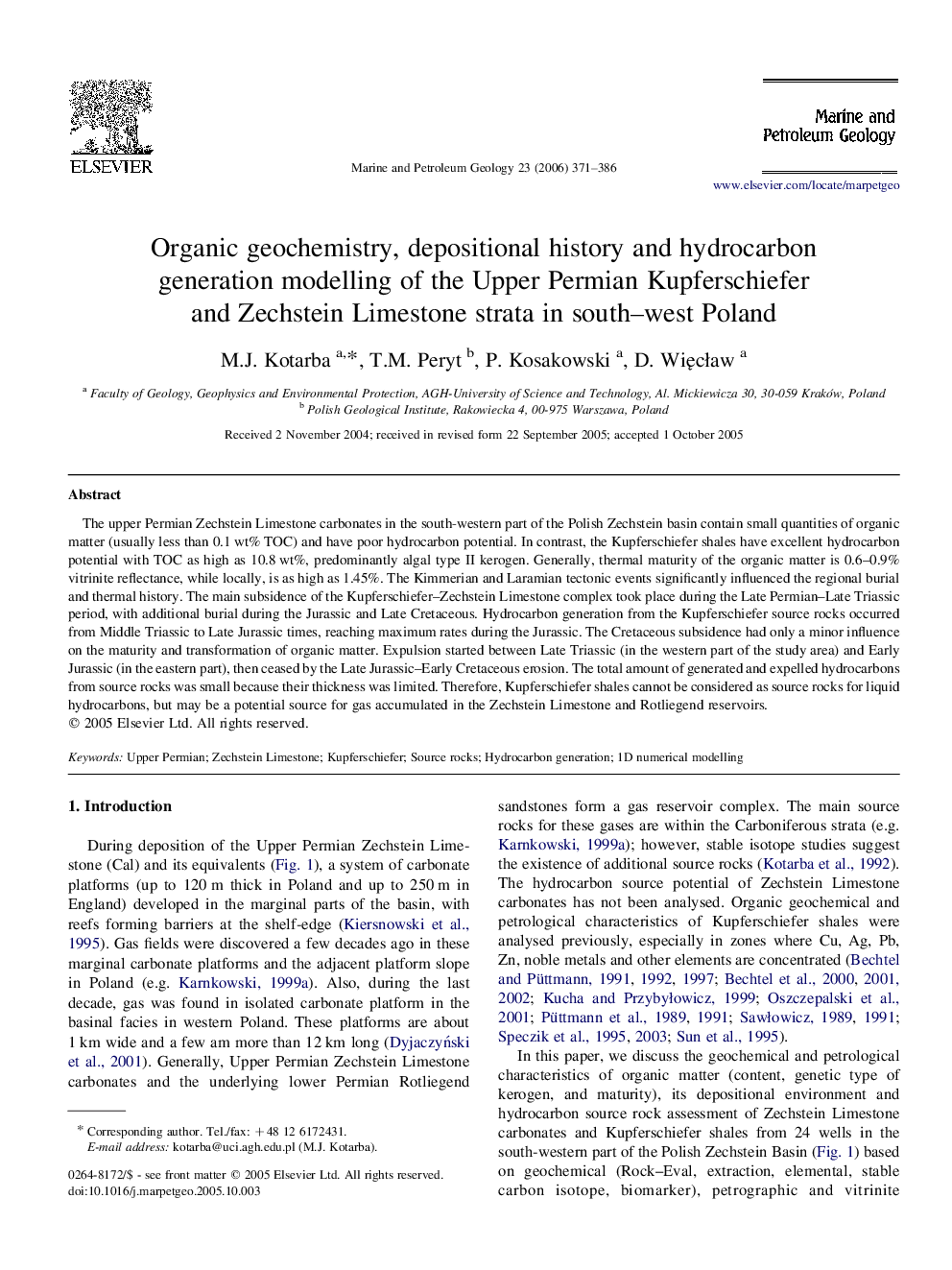| Article ID | Journal | Published Year | Pages | File Type |
|---|---|---|---|---|
| 4696594 | Marine and Petroleum Geology | 2006 | 16 Pages |
The upper Permian Zechstein Limestone carbonates in the south-western part of the Polish Zechstein basin contain small quantities of organic matter (usually less than 0.1 wt% TOC) and have poor hydrocarbon potential. In contrast, the Kupferschiefer shales have excellent hydrocarbon potential with TOC as high as 10.8 wt%, predominantly algal type II kerogen. Generally, thermal maturity of the organic matter is 0.6–0.9% vitrinite reflectance, while locally, is as high as 1.45%. The Kimmerian and Laramian tectonic events significantly influenced the regional burial and thermal history. The main subsidence of the Kupferschiefer–Zechstein Limestone complex took place during the Late Permian–Late Triassic period, with additional burial during the Jurassic and Late Cretaceous. Hydrocarbon generation from the Kupferschiefer source rocks occurred from Middle Triassic to Late Jurassic times, reaching maximum rates during the Jurassic. The Cretaceous subsidence had only a minor influence on the maturity and transformation of organic matter. Expulsion started between Late Triassic (in the western part of the study area) and Early Jurassic (in the eastern part), then ceased by the Late Jurassic–Early Cretaceous erosion. The total amount of generated and expelled hydrocarbons from source rocks was small because their thickness was limited. Therefore, Kupferschiefer shales cannot be considered as source rocks for liquid hydrocarbons, but may be a potential source for gas accumulated in the Zechstein Limestone and Rotliegend reservoirs.
